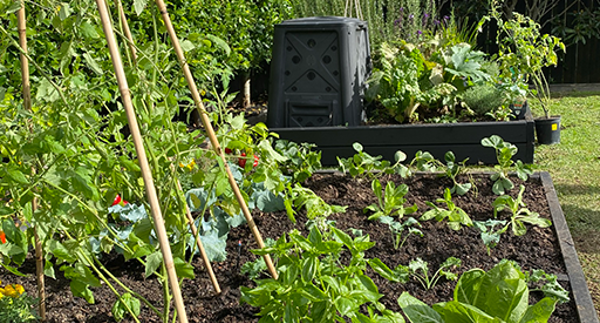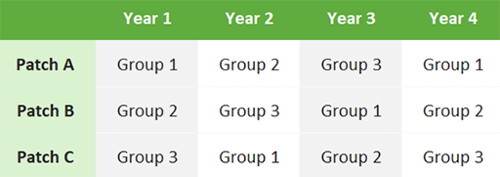
Crop rotation is a simple, effective method for keeping your vege garden healthy and productive by not planting the same crops in the same spot each season or year.
Growing the same plants in the same place can lead to a build-up of pests and diseases in the soil. These unwanted visitors often target specific plant families, and if you keep planting the same crops, you’re giving pests a steady food source and diseases a cosy home. Rotating your crops disrupts their life cycle and gives your soil a chance to recover.
It’s also great for soil health. Different plants need different nutrients - some are heavy feeders, others are light feeders. Rotating crops helps balance nutrient use and can prevent your soil from becoming depleted over time.
A bit of forward planning goes a long way. Drawing out a planting plan can really help when you’re setting up your vege garden. Note down what you plant and when - that way, you’ll know when to expect crops to finish and can plan your next round of planting using crop rotation.
Keeping a simple notebook or garden journal can make crop rotation much easier. Record what you plant, where, and when to make next seasons planning simple.
How crop rotation works
Crop rotation usually works on a four-season cycle. You group certain types of vegetables together and move those groups to a new garden bed each season.
Plants are grouped based on things like the nutrients they need, the pests and diseases they attract, and the type of soil they prefer. There’s more than one way to group crops, but here are a couple of common options:
Option 1: Classic crop groups
- Root vegetables: Carrots, beetroot.
- Legumes: Peas, beans.
- Brassicas and leafy greens: Broccoli, cauliflower, cabbage, kale, spinach, lettuce, silverbeet.
- Onion family: Onions, garlic, leeks, shallots.
- Potato family (nightshades): Potatoes, tomatoes, eggplant, capsicums.
- Curcubits: Courgettes, cucumbers, pumpkins, squash.
Option 2: A simpler grouping
- Brassicas and salads: Cabbage, broccoli, cauliflower, kale, lettuce, silverbeet, mizuna and rocket.
- Mix of legumes, onions & others: Peas, beans, celery, onion.
- Root & fruiting veges: Potatoes, kumara, yams, tomatoes, capsicum, chillies, pumpkins, carrots and courgettes.
Once you've chosen what you are going to grow, group the plants together using one of the options above. Then divide up your garden into sections - one for each group - and plant them in different patches. Next season, rotate each group to a new section of the garden, following the cycle:

Check out our Planting a Raised Vege Garden Bed Guide here to help you plan your vege garden.
If you don’t have the space to practice crop rotation it’s extra important to take the time to replenish the soil and nutrients used over summer. Dig in some Tui Organic Sheep Pellets or Tui Blood & Bone, along with good compost. Blend thoroughly and water in well to get all the goodies into the soil.
Related products
Post a comment
Crop Rotation Guide Comments
I have typed four crop rotation into my computer, and saw your guide there. I have used Tui products for many years with positive results, and will continue to do so with thanks!
Kevan
I have heard tomatoes, potatoes and eggplants should be grown separately, is this not necessary?
Elisabeth
Hi Elisabeth, egg plants, tomatoes and potatoes are all of the same family (Solanaceae) and so are susceptible the same pests and diseases. They can be grown together, but it is best practice to rotate beds and not to replant in the same area of the garden where they have previously been grown. Should pests and diseases be lying dormant in the soil it is likely to affect the next crop of these plants. It is always good to spell areas of the garden and rotate crops to prevent pests and disease spreading.
Tui Team
Very helpful information and great example provided on a crop rotation plan👍🏼
Kirstsen
Great info every month which helps even us older gardeners to refresh & find out more. I have kept NZ Gardener Mags that I have filed in monthly order to pull out the new month lot to read through & always find info to use that month. Starting plants off with a 2 -3 liter plastic bottle with its bottom cut off, & place over each new planting with this mini glasshouse costs nothing & help plants really get a good start especially in winter.
Tony Winter
Hi Tony, thank you for the feedback, we are glad you find inspiration in our articles and thank you for the tip on starting plants under cut off plastic bottles, a great way to recycle and re-use.
Lianne